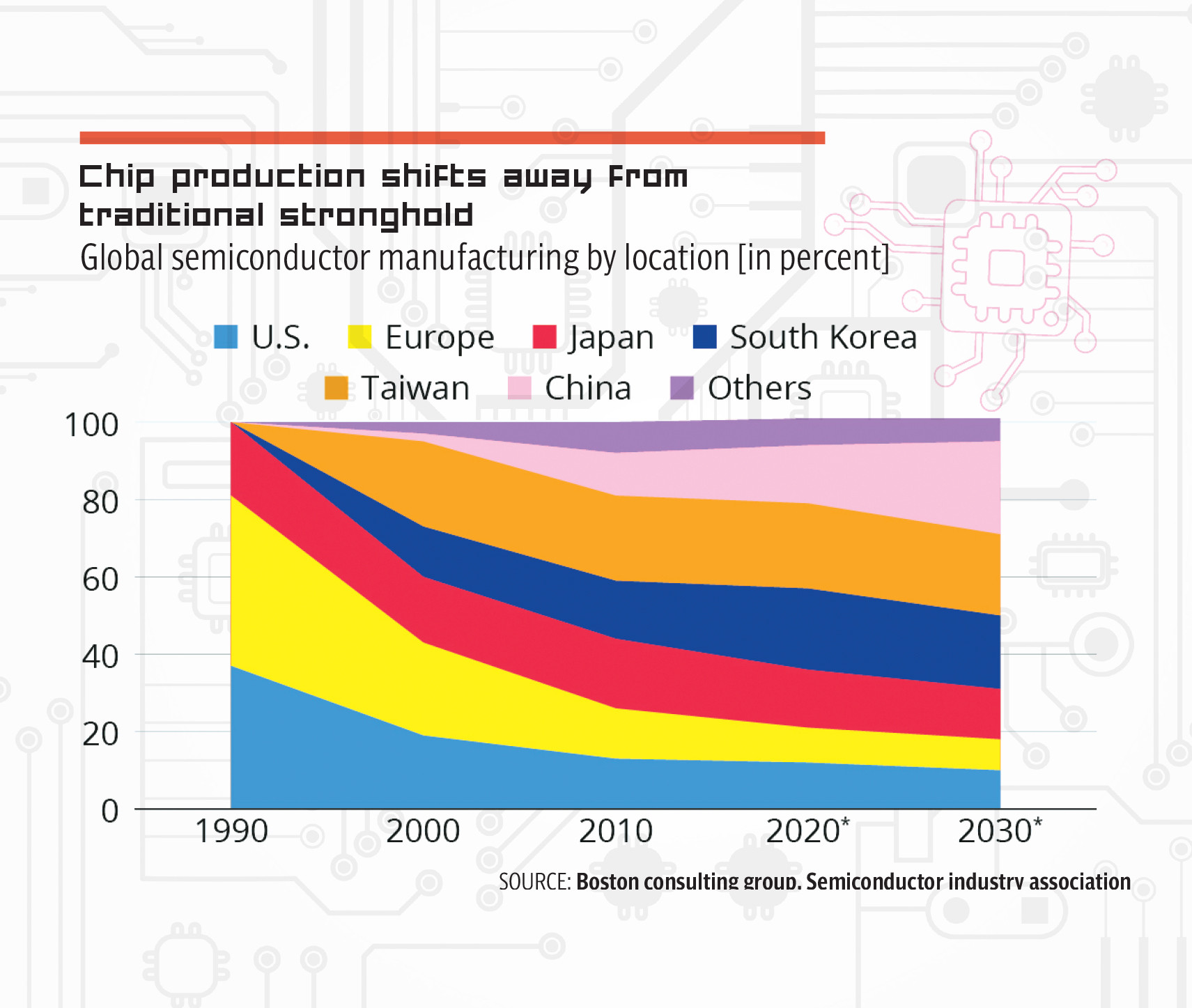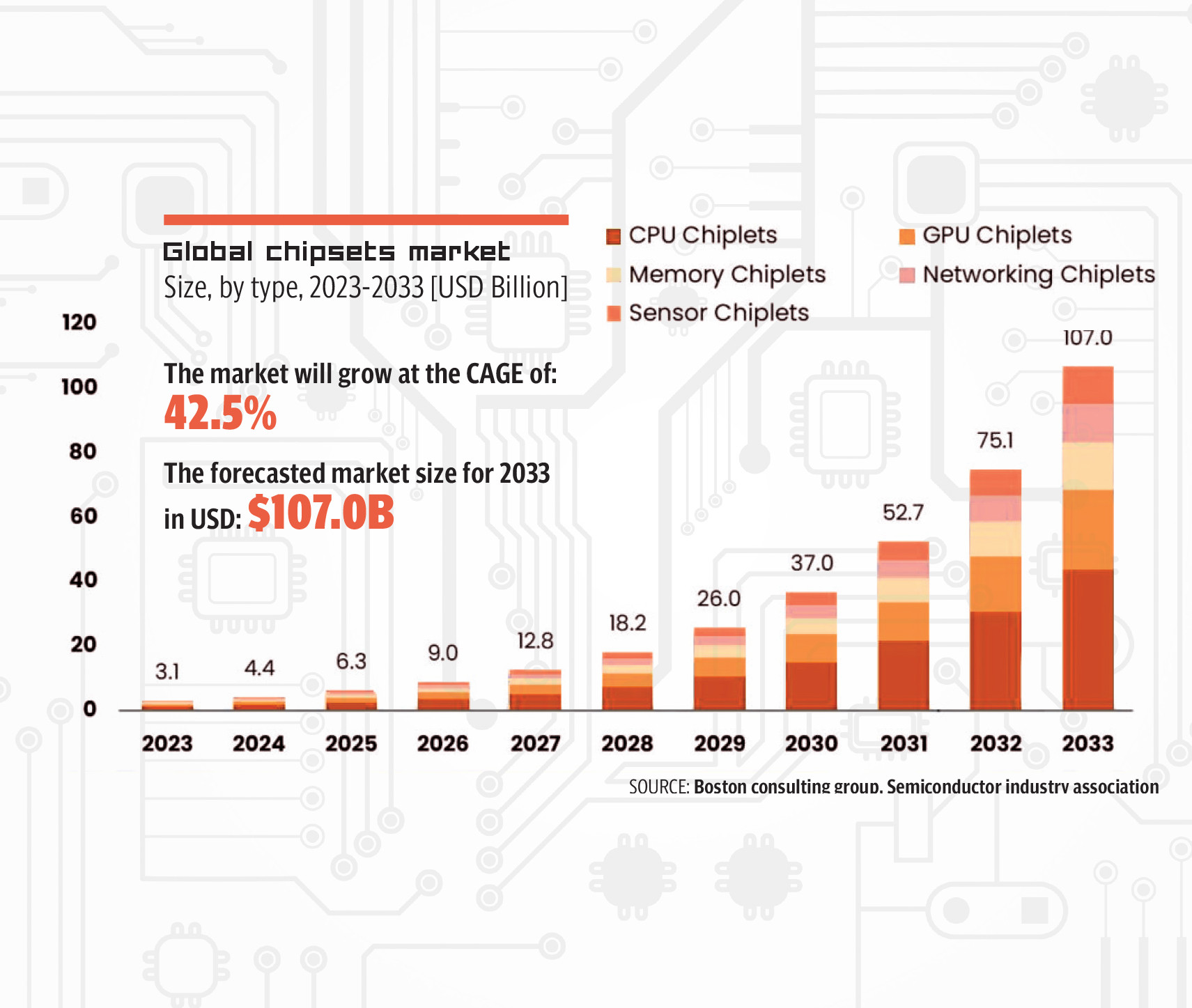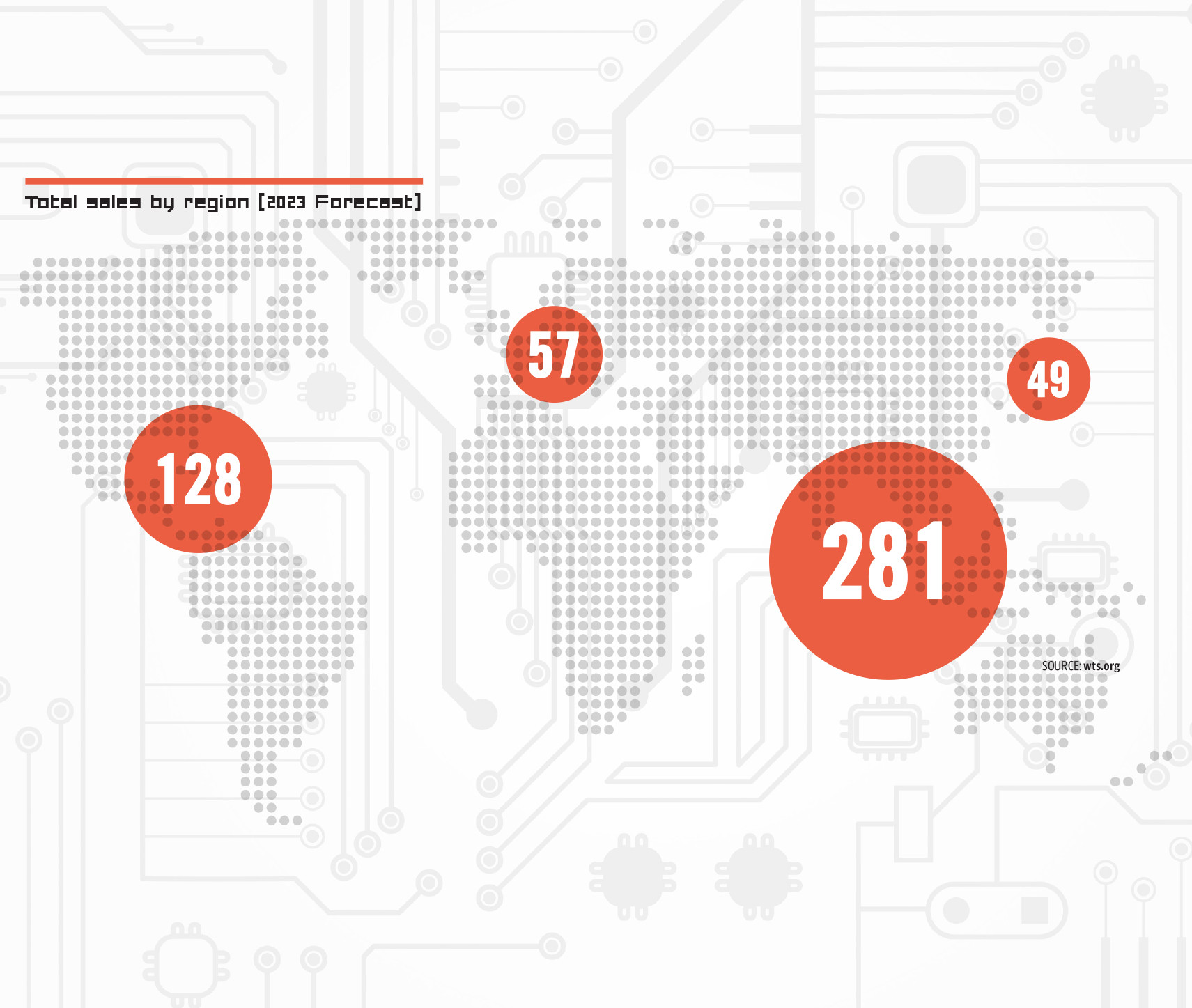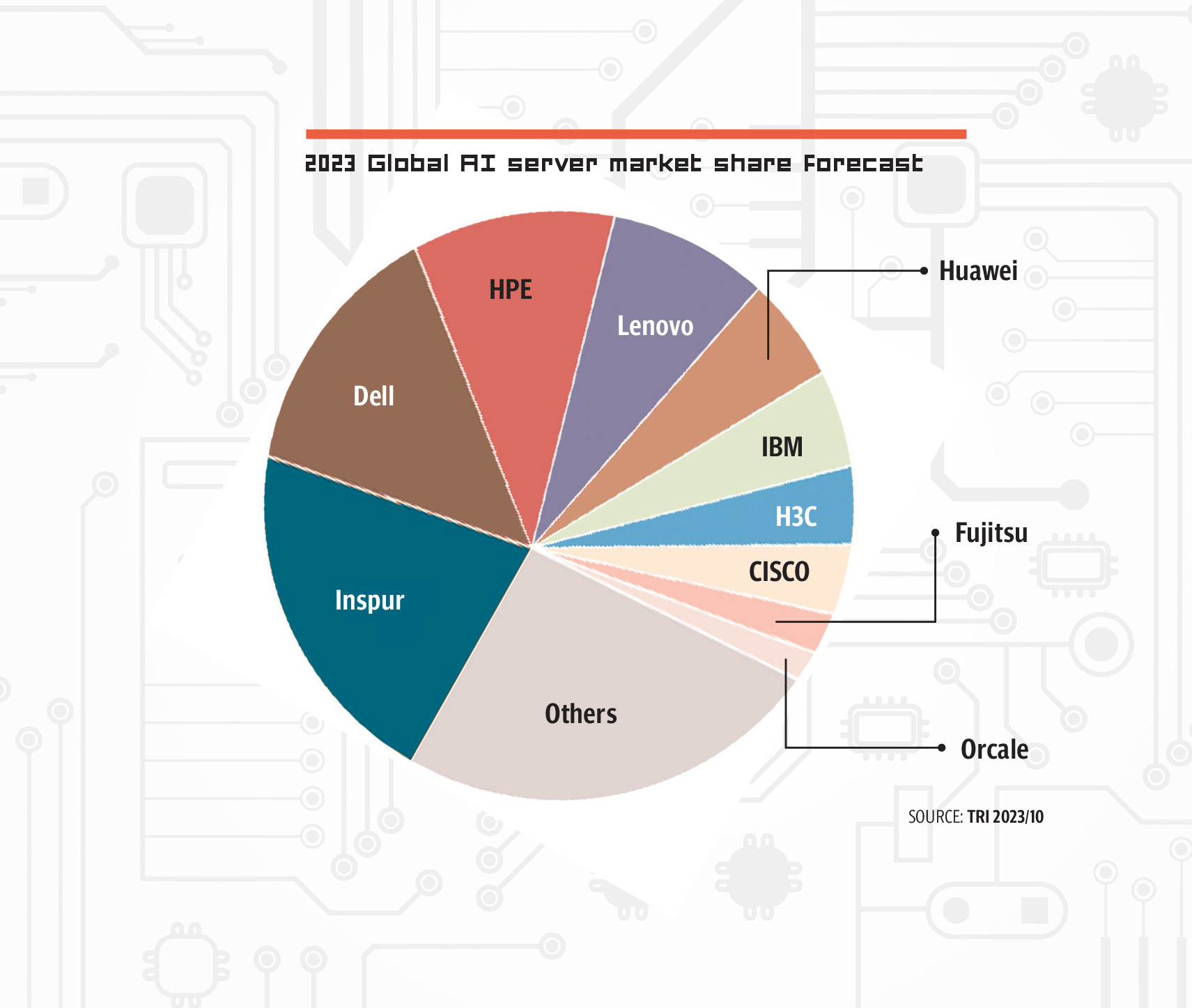Remember the last time your phone froze mid-conversation, or your brand new laptop took weeks longer than expected to arrive? It wasn't just bad luck – it's a symptom of a global chip shortage that's causing major headaches for consumers and businesses alike.
These tiny, intricate components, often smaller than your fingernail, are the invisible workhorses powering everything from our smartphones and laptops to cars, medical equipment, and even household appliances. The lack of readily available chips has crippled production lines, delayed deliveries, and sent prices soaring.
At the time of this global frustration, Pakistan has announced a bold ambition: to become a major player in the chip design and semiconductor industry. This multi-billion dollar endeavour holds the potential to not only alleviate the global chip shortage but also transform Pakistan's own economy and technological landscape.
While the road to becoming a ‘chip powerhouse’ is paved with challenges, these same hurdles represent massive opportunities for our future. Pakistan needs to build a skilled workforce from the ground up, navigate the complex geopolitical landscape of chip production, and secure the resources and infrastructure necessary for this high-tech industry. Yes the stakes are high, but so too are the rewards. Success, even on a local level, could provide a boost to the economy and employment. Investing in education and a highly skilled workforce could have a knock on effect on other sectors and industries as well.
Could Pakistan really rise to the challenge and become a major player in the chip game?

The mighty microchip
These tiny rectangles, smaller than your fingernail, hold the power to process complex information, run sophisticated software, and connect you to a world of possibilities. That's the essence of a microchip, also known as an integrated circuit (IC).
These marvels of modern engineering are the brains behind all our favourite gadgets – smartphones, laptops, tablets, gaming consoles, and even medical equipment. But their reach extends far beyond consumer electronics. Microchips are embedded in cars, controlling engine performance and entertainment systems.
They power medical devices, assisting in life-saving surgeries and diagnostics. Even everyday appliances like refrigerators and washing machines rely on microchips for functionality.
Assistant Professor Umair Bin Mansoor, at DHA Sufa University, Karachi who is also a part of Micro Electronics Research Lab (MERL), explains it simply, “Think of a microchip as a microscopic orchestra. Each transistor plays a specific note, and together they create the complex symphony that powers our devices.”
The magic of microchips lies in their ever-shrinking size. This phenomenon, known as Moore's Law, predicts that the number of transistors on a chip doubles roughly every two years. This miniaturisation allows for more powerful and efficient devices, constantly pushing the boundaries of what's possible.
“Imagine carrying a computer the size of a room in your pocket! Moore's Law has transformed bulky calculators into smartphones with processing power exceeding early supercomputers,” explains Mansoor while emphasising the impact of miniaturisation.
Microchips aren't confined to the world of smartphones and laptops. They're the hidden heroes in almost every electronic device we use daily. From the intricate control systems in your car to the life-saving technology in medical equipment, microchips are silently orchestrating the world around us.
Think about the washing machine that spins at precisely the right speed, or the refrigerator that maintains a consistent temperature. These seemingly mundane tasks are powered by microchips, constantly monitoring and adjusting settings. Mansoor highlights the ubiquitous nature of microchips, saying, “The next time you use a credit card, swipe a security card, or even turn on a light, remember – a microchip is making it all possible.”
Unfortunately, the world is currently grappling with a significant chip shortage. This has led to production delays, inflated prices, and frustrated consumers across the globe. The causes for this shortage are complex, a confluence of factors like increased demand for electronics during the pandemic, supply chain disruptions due to trade tensions, and limited manufacturing capacity.
The pandemic saw a surge in demand for personal electronics. People were working and learning from home, relying heavily on laptops and tablets. Additionally, the ongoing trade war between the US and China has disrupted the flow of essential materials and manufacturing processes.
The impact of the chip shortage is far-reaching. The automotive industry has been hit particularly hard, with major car manufacturers forced to cut production and extend wait times for new vehicles. The tech sector is also feeling the pinch, with limited availability of smartphones, laptops, and gaming consoles. Even essential medical equipment production has been hampered due to the lack of readily available chips.
While the global chip shortage presents a significant challenge, it also creates a unique opportunity for countries like Pakistan. Recognising this, the Pakistani government has announced an ambitious plan to develop a multi-billion dollar chip design and semiconductor industry. The aim is not just to become a self-sufficient nation in terms of chip supply but also potentially to emerge as a player on the global stage.
The Special Investment Facilitation Council (SIFC) has geared up to press ahead with the plan of developing a multibillion-dollar chip design and semiconductor industry in Pakistan. The government would be required to provide tax incentives and other facilitating programmes to foreign companies, especially Chinese and US investors, to encourage them to set up chip designing centres in Pakistan.
Mansoor views this as a strategic move, “Pakistan has a young and tech-savvy population, a key ingredient for a successful chip industry. Developing this sector can create high-paying jobs, boost the economy, and position Pakistan as a key player in the global tech landscape.”

Pakistan’s potential
The global chip shortage has exposed a critical vulnerability in the tech industry's supply chain. With established players like the US and China locked in a geopolitical battle over chip production, a gap has emerged – a gap that Pakistan aspires to fill.
Transforming this dream into reality is no easy feat. Several hurdles need to be overcome for Pakistan to establish a robust chip design and semiconductor industry. One of the biggest challenges is building a skilled workforce. Chip design and manufacturing require highly specialised engineers, technicians, and researchers. Pakistan's current education system may not be fully equipped to produce these skilled professionals in sufficient numbers.
“Investing in STEM education, creating specialised training programs, and fostering collaboration with universities and research institutions abroad are crucial steps. We need to create a pipeline of skilled individuals who can design, manufacture, and test chips,” explains Mansoor.
Beyond the global opportunity, Pakistan itself presents a rapidly growing market for chips. Smartphone penetration is on the rise, with millions of Pakistanis relying on these devices for communication, entertainment, and even financial transactions. This surge in smartphone usage translates to a growing demand for the microchips that power them.
Mansoor sees immense potential in the domestic market. He says that Pakistan's youth population is tech-savvy and increasingly reliant on smartphones. “A robust domestic chip industry could not only cater to this demand but also create new opportunities for innovation in areas like mobile payments and e-commerce,” he explained.
The ongoing tension between the US and China regarding chip production creates a unique opportunity for Pakistan. “The US-China chip war presents a window of opportunity for Pakistan. By establishing itself as a neutral player, Pakistan can attract investments and partnerships from both sides, fostering a collaborative approach to chip development,” highlights Mansoor while discussing the Pakistan's strategic advantage.
However, capitalising on this potential requires a skilled workforce. The chip industry demands engineers with specialised knowledge in microelectronics, circuit design, and fabrication processes. Currently, Pakistan faces a gap in this area.
Mansoor being in the system of MERL emphasises the crucial role of education, “Our education system needs to adapt to the demands of the chip industry. Universities need to develop specialised programs in microelectronics, chip design, and fabrication processes. Additionally, fostering research collaborations and industry internships will be vital to bridge the gap between theoretical knowledge and practical expertise.”
“The path forward requires a multi-pronged approach. Existing engineers can be reskilled through intensive training programs focused on chip design and fabrication. At the same time, engaging young minds early on is crucial,” he added.
He further explained the power of early exposure by saying, “Imagine a young Pakistani student fascinated by technology, building their first circuits in a high school lab. These are the future innovators who will lead Pakistan's chip industry. We need to nurture this passion and equip them with the necessary skills to excel in this field.”
By investing in education and creating a robust talent pool, Pakistan can take a significant step towards realising its chip dream.

The US-China Chip War
The global chip shortage is deeply intertwined with the ongoing tension between the US and China in chip production. The US has grown increasingly anxious about China's dominance in this critical sector, citing potential national security risks.
Historically, the US held a clear lead in chip design and manufacturing. However, China has invested heavily in domestic chip production in recent decades, making significant advancements and narrowing the gap. This rapid rise has caused unease in the US, which fears relying on a potential competitor for such essential technology.
The US harbours concerns that Chinese-made chips could contain hidden vulnerabilities or backdoors. These vulnerabilities could grant access to sensitive information or disrupt critical infrastructure. Additionally, dependence on Chinese chips could limit the US's ability to innovate and maintain a technological edge in areas like defence and artificial intelligence.
This US-China rivalry creates a unique window of opportunity for a neutral player like Pakistan. With both sides seeking to diversify their chip supply chains, Pakistan could emerge as a bridge between these tech giants. By establishing a reputation as a reliable and trustworthy partner, Pakistan can attract investments and partnerships for chip design and production.
Pakistan's neutral stance offers several advantages. Unlike some countries caught in the crossfire of the US-China tech war, Pakistan wouldn't be subject to trade restrictions or political pressure. This neutrality allows for more flexibility in forming partnerships and fostering collaboration in chip development.
However, navigating this complex geopolitical landscape requires a strategic approach. Pakistan needs to demonstrate a commitment to transparency and security in its chip production processes to build trust with both the US and China. Additionally, fostering international partnerships with established chipmakers can provide vital knowledge transfer and technological expertise.
By leveraging its neutral position and fostering international collaboration, Pakistan can carve out a space for itself in the global chip market. This strategic approach could turn the US-China tech war into a catalyst for Pakistan's own technological advancement.

Laying the foundation
Transforming Pakistan's chip dream into reality requires a multi-pronged approach to building infrastructure, as highlighted by the Special Investment Facilitation Council (SIFC). The government recognises the need to attract foreign investment, particularly from US and Chinese companies. Offering tax breaks and other incentives is crucial to encourage them to establish chip design centres in Pakistan, potentially attracting billions of dollars.
The SIFC even proposes a government-to-business (G2B) model for chip design facilities, acting as a catalyst for further industry development.
Experts like Muhammad Naqi, CEO of Premier Code, emphasise a step-by-step approach. Building chip design and testing facilities first can gain the confidence of established players like Intel, AMD, and NVidia. This aligns with the findings of the Pakistan National Semiconductor Plan, which acknowledges the current lack of chip manufacturing capabilities.
Pakistan's complex customs regime and its reputation for a challenging business environment also need to be addressed. The government is exploring solutions such as a “one-stop shop” approach for customs clearance. Highlighting recent improvements in the ease of doing business can also create a more investor-friendly environment.
Mansoor emphasises the importance of Special Economic Zones (SEZs). He says, “SEZs can provide a nurturing environment for chip companies to establish themselves. Streamlined processes, tax breaks, and access to essential utilities will be crucial to attracting international players and fostering domestic innovation.”
However, simply building factories isn't enough. Pakistan needs to establish partnerships with established chipmakers. These partnerships can provide vital knowledge transfer and technology access, accelerating Pakistan's learning curve in this complex field. Collaborations can encompass joint research ventures, technology licensing agreements, and training programs for Pakistani engineers.
By learning from their expertise and experience, Pakistan can bridge the technological gap more quickly. This will allow us to not only manufacture chips but also contribute to cutting-edge research and development.
Despite challenges, Pakistan has unique strengths. The country boasts a large pool of low-cost human resources, making it a potentially attractive destination for chip design and manufacturing.

Resource rich or resource requiring?
The chip industry relies on a specific set of elements known as rare earth minerals. These minerals are crucial for the production of certain types of chips, and their scarcity and uneven global distribution can pose challenges.
Does Pakistan hold the key to its own chip dream by harbouring deposits of these rare earth minerals? Mansoor sheds light on this aspect, saying that while there haven't been any major discoveries of rare earth minerals in Pakistan yet, further geological exploration could hold promise. However, relying solely on domestic resources might not be the most practical approach.
This is where strategic partnerships come into play. Pakistan can explore collaborating with countries that possess these rare earth minerals. By establishing mutually beneficial agreements, Pakistan can secure a stable supply chain for these vital materials.
But there's another side to the story. The chip industry is constantly evolving, and researchers are actively exploring alternative materials and fabrication techniques that are less reliant on rare earth minerals. These advancements could potentially reduce Pakistan's dependence on these specific resources.
“The good news is that the chip industry is constantly innovating. New materials and fabrication techniques are emerging that require fewer rare earth elements. By staying at the forefront of research and development, Pakistan can potentially overcome challenges related to resource scarcity,” explained Mansoor while highlighting the role of innovation.
While possessing domestic reserves of rare earth minerals would be ideal, Pakistan doesn't necessarily need to start from scratch. By pursuing partnerships, exploring alternative materials, and actively engaging in research, Pakistan can navigate the resource landscape of the chip industry and ensure a sustainable path towards its chip dream.

What to expect?
Pakistan's ambition to become a major player in the chip design and semiconductor industry is a bold move with the potential to transform the nation's technological and economic landscape. The global chip shortage has created a unique window of opportunity, but significant hurdles remain.
One of the biggest challenges is building a skilled workforce. Pakistan's education system needs to adapt to equip students with the specialised knowledge in microelectronics, circuit design, and fabrication processes required for chip development.
Collaboration with universities and research institutions abroad, along with fostering STEM education and industry internships, are crucial steps. Additionally, reskilling existing engineers through intensive training programs can help bridge the gap.
Pakistan can navigate the complex geopolitical landscape and resource limitations by strategically leveraging its neutral position. By establishing itself as a trustworthy partner, the country can attract investment and collaboration from both the US and China.
SEZs offering tax breaks and streamlined processes can create a nurturing environment for chip companies. Partnerships with established chipmakers can provide vital knowledge transfer and technology access, accelerating Pakistan's learning curve. Exploring alternative materials and fabrication techniques, alongside strategic partnerships to secure access to rare earth minerals, will ensure a sustainable path for this chip dream.
With a multi-pronged approach that prioritises education, infrastructure development, and international collaboration, Pakistan has the potential to overcome the challenges and turn its chip dream into a reality. This endeavour could not only fulfil domestic needs but also position Pakistan as a key player in the global chip market. The journey will require determination and strategic planning, but the potential rewards are significant.
